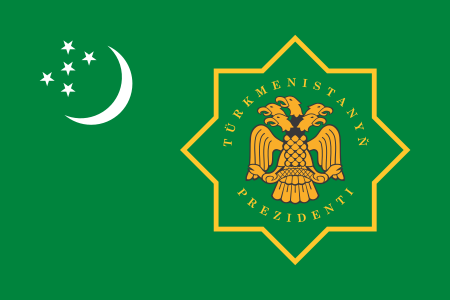Hajib
|
Read other articles:

Agricultural practices of pre-historic native cultures in the eastern United States and Canada The sunflower was one of the plants that made up the Eastern Agricultural Complex. The Eastern Agricultural Complex in the woodlands of eastern North America was one of about 10 independent centers of plant domestication in the pre-historic world. Incipient agriculture dates back to about 5300 BCE. By about 1800 BCE the Native Americans of the woodlands were cultivating several species of food plants, …

American computer scientist (born 1934) Leonard KleinrockHeadshot of Leonard KleinrockBorn (1934-06-13) June 13, 1934 (age 89)New York CityNationalityAmericanAlma materCity College of New York, MITKnown forQueuing theory, ARPANET, Internet developmentAwardsMarconi Prize (1986)Harry H. Goode Memorial Award (1996)National Medal of Science (2007)[1]IEEE Alexander Graham Bell Medal (2012)BBVA Foundation Frontiers of Knowledge Award (2014)Scientific careerFieldsEngineeringCompu…

American historian (1941–2018) Rosalyn Terborg-PennTerborg-Penn at the U.S. National Archives in 2015Born(1941-10-22)October 22, 1941Brooklyn, New York, U.S.DiedDecember 25, 2018(2018-12-25) (aged 77)Columbia, Maryland, U.S.Academic backgroundEducationJohn Adams High SchoolAlma materQueens College, City University of New York; George Washington University; Howard UniversityAcademic workDisciplineHistorian Rosalyn Terborg-Penn (October 22, 1941 – December 25, 2018) was an American profes…

Autoritratto – Olio su tela, Museo nazionale di Stoccolma Peter Adolf Hall (Borأ¥s, 23 febbraio 1739 – Liegi, 15 maggio 1793) أ¨ stato un pittore miniaturista svedese. Egli operأ² molto in Francia ed in Belgio, dopo la metأ del XVIII secolo. Ebbe il merito di portare la miniatura al suo piأ¹ alto livello. Figlio di un notabile svedese, Peter Adolf Hall fu il miniaturista piأ¹ apprezzato della sua generazione, in Francia e prima della rivoluzione. Indice 1 Biografia 2 L'attivitأ artistica 3…

†ذ•ذ³ذ¸ذ؟ر‚ذ¾ذ؟ذ¸ر‚ذµذ؛ ذ ذµذ؛ذ¾ذ½رپر‚ر€رƒذ؛ر†ذ¸رڈ ذ²ذ½ذµرˆذ½ذµذ³ذ¾ ذ²ذ¸ذ´ذ° ذµذ³ذ¸ذ؟ر‚ذ¾ذ؟ذ¸ر‚ذµذ؛ذ° ذذ°رƒر‡ذ½ذ°رڈ ذ؛ذ»ذ°رپرپذ¸ر„ذ¸ذ؛ذ°ر†ذ¸رڈ ذ”ذ¾ذ¼ذµذ½:ذرƒذ؛ذ°ر€ذ¸ذ¾ر‚ر‹ذ¦ذ°ر€رپر‚ذ²ذ¾:ذ–ذ¸ذ²ذ¾ر‚ذ½ر‹ذµذںذ¾ذ´ر†ذ°ر€رپر‚ذ²ذ¾:ذرƒذ¼ذµر‚ذ°ذ·ذ¾ذ¸ذ‘ذµذ· ر€ذ°ذ½ذ³ذ°:ذ”ذ²رƒرپر‚ذ¾ر€ذ¾ذ½ذ½ذµ-رپذ¸ذ¼ذ¼ذµر‚ر€ذ¸ر‡ذ½ر‹ذµذ‘ذµذ· ر€ذ°ذ½ذ³ذ°:ذ’ر‚ذ¾ر€ذ¸ر‡ذ½ذ¾ر€ذ¾ر‚ر‹ذµذ¢ذ¸ذ؟:ذ¥ذ¾ر€ذ´ذ¾ذ²ر‹ذµذںذ¾ذ´ر‚ذ¸ذ؟:ذںذ¾ذ·ذ²ذ¾ذ½ذ¾ر‡ذ½ر‹ذµذکذ½ر„ر€ذ°ر‚ذ¸ذ؟:ذ§ذµذ»رژرپر‚ذ½ذ¾ر€ذ¾ر‚ر‹ذµذذ°ذ´ذ؛ذ»ذ°رپرپ:ذ§ذµر‚ذ²ذµر€ذ¾ذ½ذ¾ذ³ذ¸…

ذ¥ر€ذ¸رپر‚ذ¸ذ°ذ½رپر‚ذ²ذ¾ذ‘ذ¸ذ±ذ»ذ¸رڈ ذ’ذµر‚ر…ذ¸ذ¹ ذ—ذ°ذ²ذµر‚ ذذ¾ذ²ر‹ذ¹ ذ—ذ°ذ²ذµر‚ ذ•ذ²ذ°ذ½ذ³ذµذ»ذ¸ذµ ذ”ذµرپرڈر‚رŒ ذ·ذ°ذ؟ذ¾ذ²ذµذ´ذµذ¹ ذذ°ذ³ذ¾ر€ذ½ذ°رڈ ذ؟ر€ذ¾ذ؟ذ¾ذ²ذµذ´رŒ ذگذ؟ذ¾ذ؛ر€ذ¸ر„ر‹ ذ‘ذ¾ذ³, ذ¢ر€ذ¾ذ¸ر†ذ° ذ‘ذ¾ذ³ ذر‚ذµر† ذکذ¸رپرƒرپ ذ¥ر€ذ¸رپر‚ذ¾رپ ذ،ذ²رڈر‚ذ¾ذ¹ ذ”رƒر… ذکرپر‚ذ¾ر€ذ¸رڈ ر…ر€ذ¸رپر‚ذ¸ذ°ذ½رپر‚ذ²ذ° ذگذ؟ذ¾رپر‚ذ¾ذ»ر‹ ذ¥ر€ذ¾ذ½ذ¾ذ»ذ¾ذ³ذ¸رڈ ر…ر€ذ¸رپر‚ذ¸ذ°ذ½رپر‚ذ²ذ° ذ ذ°ذ½ذ½ذµذµ ر…ر€ذ¸رپر‚ذ¸ذ°ذ½رپر‚ذ²ذ¾ ذ“ذ½ذ¾رپر‚ذ¸ر‡ذµرپذ؛ذ¾ذµ ر…ر€ذ¸رپر‚ذ¸ذ°ذ½رپر‚ذ²ذ¾ ذ’رپذµذ»ذµذ½رپذ؛ذ¸ذµ رپذ¾ذ±ذ¾ر€ر‹ ذذ¸ذ…

Indian actor (1967–2020) Irrfan redirects here. For other use, see Irfan Khan (disambiguation). Irrfan KhanKhan in 2015BornSahabzade Irfan Ali Khan[1](1967-01-07)7 January 1967Tonk, Rajasthan, IndiaDied29 April 2020(2020-04-29) (aged 53)[2][3]Mumbai, Maharashtra, India[1]Burial placeVersova Muslim Kabristan, MumbaiOccupationActorYears active1985–2020Spouse Sutapa Sikdar (m. 1995)Children2, including BabilAwardsPadma Shr…

2016ه¹´ç¾ژهœ‹ç¸½çµ±éپ¸èˆ‰ ← 2012 2016ه¹´11وœˆ8و—¥ 2020 → 538ه€‹éپ¸èˆ‰ن؛؛هœکه¸ن½چçچ²ه‹éœ€270票و°‘و„ڈèھ؟وں¥وٹ•ç¥¨çژ‡55.7%[1][2] â–² 0.8 % èژ·وڈگهگچن؛؛ ه”گç´چآ·ه·و™® ه¸Œو‹‰èژ‰آ·ه…‹و—é “ و”؟ه…ڑ ه…±ه’Œé»¨ و°‘ن¸»ه…ڑ ه®¶é„‰ه· ç´گç´„ه· ç´گç´„ه· ç«é€‰وگو،£ è؟ˆه…‹آ·ه½و–¯ è’‚ه§†آ·ه‡±وپ© 选ن¸¾ن؛؛票 304[3][4][註 1] 227[5] 胜ه‡؛ه·/çœپ 30 + ç·¬-2 20 + DC و°‘éپ¸ه¾—票 62,984,828[6] 65,853,514[6] ه¾—…

هœںه؛“و›¼و–¯ه¦و€»ç»ںهœںه؛“و›¼و–¯ه¦ه›½ه¾½هœںه؛“و›¼و–¯ه¦و€»ç»ںو——çڈ¾ن»»è°¢ه°”è¾¾ه°”آ·هˆ«ه°”ه¾·ç©†ه“ˆو¢…ه¤ڑه¤«è‡ھ2022ه¹´3وœˆ19و—¥ه®ک邸éک؟ن»€ه“ˆه·´ه¾·و€»ç»ںه؛œï¼ˆOguzkhan Presidential Palace)و©ںé—œو‰€هœ¨هœ°éک؟ن»€ه“ˆه·´ه¾·ن»»ه‘½è€…ç›´وژ¥é€‰ن¸¾ن»»وœں7ه¹´ï¼Œهڈ¯è؟选è؟ن»»é¦–ن»»èگ¨ه¸•ه°”穆و‹‰ç‰¹آ·ه°¼ن؛ڑن½گه¤«è®¾ç«‹1991ه¹´10وœˆ27و—¥ هœںه؛“و›¼و–¯ه¦هœںه؛“و›¼و–¯ه¦و”؟ه؛œن¸ژو”؟و²» ه›½ه®¶و”؟ه؛œ هœںه؛“و›¼و–¯ه¦ه®ھو³• ه›½و—— ه›½ه¾½ ه›½وŒ ç«‹و³•و©ں關(英è¯ï¼ڑNational Council of Turkmenistan) هœںه…
2020ه¹´ه¤ڈه£ه¥¥و—هŒ¹ه…‹è؟گهٹ¨ن¼ڑو³¢ه…°ن»£è،¨هœکو³¢ه…°ه›½و——IOC編碼POLNOCو³¢èکه¥§و—هŒ¹ه…‹ه§”ه“،وœƒç¶²ç«™olimpijski.pl(英و–‡ï¼‰ï¼ˆو³¢ه…°و–‡ï¼‰2020ه¹´ه¤ڈه£ه¥¥و—هŒ¹ه…‹è؟گهٹ¨ن¼ڑ(و±ن؛¬ï¼‰2021ه¹´7وœˆ23و—¥è‡³8وœˆ8و—¥ï¼ˆهڈ—2019ه† çٹ¶ç—…و¯’ç—…ç–«وƒ…ه½±ه“چوژ¨è؟ں,ن½†ن»چن؟ç•™هژںه®ڑهگچ称)éپ‹ه‹•ه“،206هڈƒè³½é …ç›®24ن¸ھه¤§é،¹و——و‰‹ه¼€ه¹•ه¼ڈï¼ڑه¸•ç»´ه°”آ·ç§‘çƒه°¼ه¥¥ه¤«و–¯هں؛(و¸¸و³³ï¼‰ه’Œé©¬ه¨…آ·و²ƒن»€ن¹”ه¤«و–¯هچ،(è‡ھè،Œè½¦ï¼‰[1]é—ه¹•ه¼ڈï¼ڑهچ،ç½—هˆ©ه¨œآ·ç؛³ن؛ڑ(çڑ®هˆ’艇)[2…

çƒڈه…‹èک總çگ†ذںر€ذµذ¼'ر”ر€-ذ¼ر–ذ½ر–رپر‚ر€ ذ£ذ؛ر€ذ°ر—ذ½ذ¸çƒڈه…‹èکهœ‹ه¾½çڈ¾ن»»و°ه°¼و–¯آ·ن»€ç±³هٹ ه°”è‡ھ2020ه¹´3وœˆ4و—¥ن»»ه‘½è€…çƒڈه…‹èک總統ن»»وœں總統ن»»ه‘½é¦–ن»»ç¶و‰ک爾ه¾·آ·ç¦ڈ金设立1991ه¹´11وœˆهگژ继èپŒن½چç„،网站www.kmu.gov.ua/control/en/(英و–‡ï¼‰ ن¹Œه…‹ه…° ن¹Œه…‹ه…°و”؟ه؛œن¸ژو”؟و²»ç³»هˆ—و،ç›® ه®ھو³• و”؟ه؛œ و€»ç»ں ه¼—و‹‰هں؛ç±³ه°”آ·و³½è؟و–¯هں؛ 總統辦ه…¬ه®¤ ه›½ه®¶ه®‰ه…¨ن¸ژه›½éک²ن؛‹هٹ،ه§”ه‘کن¼ڑ و€»ç»ںن»£è،¨ï¼ˆè‹±è¯ï¼ڑRepresentatives of the President of Ukraine) و€»çگ†…

This article has multiple issues. Please help improve it or discuss these issues on the talk page. (Learn how and when to remove these template messages) The examples and perspective in this article may not represent a worldwide view of the subject. You may improve this article, discuss the issue on the talk page, or create a new article, as appropriate. (March 2020) (Learn how and when to remove this message) This article needs additional citations for verification. Please help improve this art…

Form of cannabis cultivation This article has multiple issues. Please help improve it or discuss these issues on the talk page. (Learn how and when to remove these template messages) This article includes a list of general references, but it lacks sufficient corresponding inline citations. Please help to improve this article by introducing more precise citations. (April 2012) (Learn how and when to remove this message) This article possibly contains original research. Please improve it by verify…

United Nations body tasked with the promotion of human rights For similarly named entities, see United Nations human rights organization (disambiguation).This article relies excessively on references to primary sources. Please improve this article by adding secondary or tertiary sources. Find sources: United Nations Human Rights Council – news آ· newspapers آ· books آ· scholar آ· JSTOR (April 2022) (Learn how and when to remove this message) United Nations Hu…

Stadion Yishun LokasiLokasiYishun, SingapuraData teknisPermukaanRumput lapangan TrekKapasitas3,400PemakaiYoung Tigers ASunting kotak info • L • BBantuan penggunaan templat ini Stadion Yishun adalah sebuah stadion serbaguna di Yishun, Singapura, satu wilayah dengan Stasiun MRT Khatib. Stadion ini memiliki kapasitas 3.400. Sejarah Stadion Yishun saat ini digunakan sebagian besar untuk pertandingan sepak bola Pada tahun 1996 sampai 2003, adalah rumah bagi Sembawang Rangers FC. Pada 20…

For the community in Kern County, see Indian Wells, Kern County, California. For the former town in Imperial County, see Indian Wells, Imperial County, California. City in California, United StatesIndian WellsCityCity limit as seen from Palm Desert, CaliforniaNickname: I.W.Location of Indian Wells in Riverside County, CaliforniaIndian WellsLocation in the United StatesCoordinates: 33آ°43′07″N 116آ°18′30″W / 33.71861آ°N 116.30833آ°W / 33.71861; -116.30833[…

Bank BrasilJenisSociedade Anأ´nimaKode emitenBM&F Bovespa: BBAS3IndustriKeuangan dan AsuransiDidirikan1808KantorpusatBrasilia, BrasilTokohkunciAldemir Bendine, (Direktur Utama)ProdukPerbankanAsuransiPerbankan retailEkuitas swastaPendapatan AS$ 48,9 Miliar (2010)Laba bersih AS$ 7,3 Miliar (2010)Total aset AS$ 605,4 Miliar (2011)[1]PemilikPemerintah Brasilian (73%)Karyawan118.900AnakusahaBank Votorantim Bank Patagonia EuroBank USASitus webwww.bb.com.br Bank Brasil (Portugis: Banco …

Ira HoughLahir(1842-07-02)2 Juli 1842Henry County, IndianaMeninggal18 Oktober 1916(1916-10-18) (umur 74)Chipley, FloridaTempat pemakamanSalem Methodist Cemetery, Graceville, FloridaPengabdianAmerika SerikatDinas/cabangAngkatan Darat Amerika SerikatUnion ArmyLama dinas1864 - 1865PangkatPrivatKesatuan8th Indiana InfantryPerang/pertempuranPerang Saudara Amerika • Pertempuran Cedar CreekPenghargaanMedal of Honor Ira Hough (2 Juli 1842 – 18 Oktober 1916) adalah seoran…

Place in Warmian-Masurian Voivodeship, PolandOrnetaTown hall FlagCoat of armsOrnetaCoordinates: 54آ°6′46″N 20آ°7′54″E / 54.11278آ°N 20.13167آ°E / 54.11278; 20.13167Country PolandVoivodeshipWarmian-MasurianCountyLidzbarkGminaOrnetaArea • Total9.63 km2 (3.72 sq mi)Population (2016) • Total8,951 • Density930/km2 (2,400/sq mi)Time zoneUTC+1 (CET) • Summer (DST)UTC+2 (CEST)Postal code11-130Ve…

Voce principale: Calcio (sport). Questa voce o sezione sull'argomento calcio أ¨ ritenuta da controllare. Motivo: Voce scritta con troppi toni enfatici, con un linguaggio giornalistico invece di usare uno stile enciclopedico neutrale, e la sezione Storia del calcio in Italia, oltre a limitarsi a ripetere quanto scritto in Storia della Serie A, أ¨ carente di fonti e prospettiva storica. Partecipa alla discussione e/o correggi la voce. Segui i suggerimenti del progetto di riferimento. Calcio i…